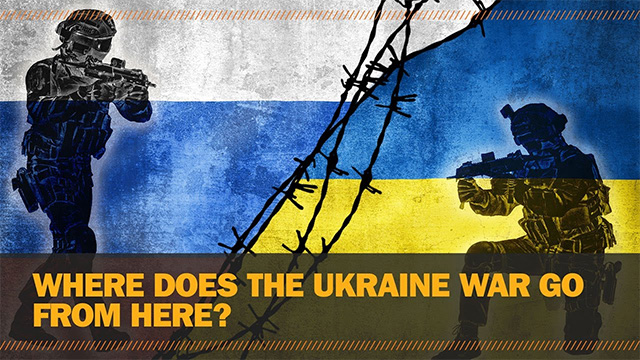
It is time to start thinking outside the box. A long-term solution requires an institutional design and steps to ensure that front-line states, including Russia, feel safer, proposes Gordon Adams, a political commentator who has created think tanks, worked for Bill Clinton in the White House, taught national security.
Make no mistake: This war is not about democracy versus authoritarianism or the “rules of the international order” as defined by the United States. It is about insecurity and fear on both sides. The fear of invasion and the need for reassurance is an old one. It’s about sovereignty and the inviolability of borders — the right for people to live in safety, be they Ukrainians, Poles, Balts, or Russians.
Fear runs strong on both sides of this conflict. For Ukraine, Poland and the Baltics, the fear is existential; for Russia, the fear is historical.
Broadly speaking, there are two ways nations might alleviate this fear. One is to “arm up” to deter any potential adversary. The other, especially relevant in the space from Brest to Vladivostok, is to “arm down,” lowering security risks through a reduction in tension and reassurance. Both are “realistic” options — but only the first is being pursued today.
The goal of statecraft needs to be security for everyone in the Eurasian region. The Russians need to feel as secure as the NATO members do. In addition, the major powers — the U.S. and China — need to be part of such a regime or its guarantors.
Here are several suggestions to stimulate discussion:
1.) First and foremost, all interested parties need to be included in the regime so all security needs are met. Most important, Russia needs to be an integral member, shaping and participating in the design. This was not done in the 1990s (yes, I was part of the administration that failed to do it). Instead, Russia was marginalized as NATO expanded.
2.) Including everyone means the regime should eventually replace NATO, not make NATO its heart. Otherwise, including Russia is a non-starter.
3.) This might mean putting the European Union at the heart of the regime — a European solution, not an American one. This would be a major challenge for the EU, which has devoted only marginal attention to military capabilities and security strategies for Eurasia. NATO has been Europe’s default.
4.) It means taking Macron seriously when he (like other French presidents before him) calls for “strategic autonomy” for Europe. Europe will need and want independence of action; indeed the caution of France and Germany about confrontation with Russia reflects that reality.
‘Autonomy’ will mean creating a more comprehensive European military capability, one that can work in tandem with the U.S. and others, but also on its own. That would make a significant U.S. military withdrawal from Europe possible, a step that would reassure Russia, too. A European capability would have to reflect the larger security regime being created. The reassurance such an agreement brings could make Europe’s military investment less costly.
5.) Arms control and arms reductions would be a central feature of such an arrangement. Arms control agreements will need to include nuclear weapons — strategic and tactical — and missile defenses. This means a revival of global nuclear arms negotiations, including the U.S. and China, and specifically revived agreements on the deployment of tactical nuclear weapons and missile defenses in the European region. It must include a serious discussion of the role of French (and British) nuclear capabilities.
7.) New institutions will be needed. This is a moment for institutional innovation, as was the moment that led to the UN, the EU, NATO, and the Shanghai Cooperation Organization. Could the Organization for Security and Cooperation in Europe (OSCE) be redefined to play a central role, since it has a security mission and all European players belong? What changes would have to be made for it to play a serious role?
8.) The U.S. and China would both need to be central partners in shaping this regime. Would they be members? Guarantors? Answering this question could ensure that the U.S. plays a role but is less centrally involved with the decisions. This would mollify those in Washington who want the Europeans to carry more of the burden. It would also recognize China’s growing role in security issues globally. This is about Eurasian security, remember. A U.S.-China confrontation could blow the whole idea up…
Lest this proposal be thought “idealistic;” it is actually realistic. If security is the goal, a Eurasian security arrangement — “arming down” — is a more realistic way of providing long-term security.
…One gets the impression that analysts and experts who worked in the US administration thirty years ago, like this author, understand the depth of the issues and problems that arise much better than the current generation of experts and politicians in the Biden administration.
read more in our Telegram-channel https://t.me/The_International_Affairs

 10:38 27.05.2023 •
10:38 27.05.2023 •






















